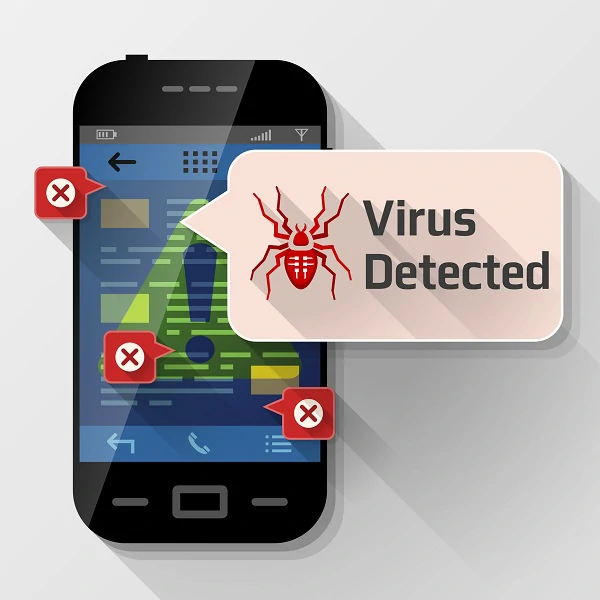Hack a WiFi access code
Can we crack WiFi codes?

Hack a WiFi access code
Can we crack WiFi codes?

Most users are unaware that this is a problem and it is even scarier! Even if they believe they are safe, WiFi connection networks have never been so much in the crosshairs of hackers. Indeed, even with good protection, hackers can capture the airwaves and decrypt the WiFi key.
In recent years, WiFi hacking has become more and more common. Why ? Because more and more users want to access the Internet freely without having to pay. This is the first excuse a hacker will give you. In reality, this hack hides many other things... Indeed, hacking a WiFi is the first step in concealing your true identity. By connecting to someone else's network, he is protected and it will be difficult to prove that he is the one who broke the law.
Generally, hackers do illegal business on the internet, download movies, music and make their living on Dark Web or private forums.
They could use an anonymous VPN server, but this requires prior registration with identity statement... so why take such risks when you can hack the neighbor's WiFi for example?
It is not uncommon for WiFi to be targeted by people who want to connect to it. Indeed, WiFi can be attacked for different reasons such as getting internet connection for free or infecting the whole network in order to steal data and monitor traffic. Regardless of the context, hackers always work harder.
Here are some techniques that are used to regain access to WiFi networks:

WIFI network using PASS WIFI.
As you’ve probably noticed, WiFi password recovery techniques that don’t involve software are usually reserved for individuals with advanced computer skills. So if you’re a beginner, you need an application that can simplify the process for you. PASS WIFI was developed by cybersecurity experts. It’s reliable, practical, and accessible to everyone. All you need to do is get it from its official website.
This software decrypts all network connections in real time.
Just follow these three steps:
Once launched, PASS WIFI scans available network data and displays the password for each router within minutes.
That’s not all! You get a 30-day free trial upon installation. At the end of this period, you’re either satisfied or refunded.
Download PASS WIFI from this link: https://www.passwordrevelator.net/en/passwifi

WPS for Wireless Protected Setup is a setting that is found on almost all routers, but also on other computing devices such as printers....
To activate it, just press the button dedicated to it. Once you press the button, your computer terminal will display the wireless network that is available. There is the possibility that an eight-digit security code will be requested. You can use the default PIN code found in the WPS setup manual. It may even happen that the PIN code in question is mentioned on the back of the router. The PIN code can take the place of the basic access password. Since you can't access the PIN code physically behind the router or through the configuration manual, you can use the brute force attack because the latter is easy to crack.

Most often in our phones, without even realizing it, we have databases of login credentials at WiFi hotspots just about everywhere we go. Whether in a public space or in a private space, when you connect to a WiFi, whether it is protected or not, our smartphone has the possibility of saving this WiFi network to facilitate a new connection. In a show of solidarity, it may happen that a user who has already succeeded in connecting to a WiFi router shares the connection identifiers saved by his smartphone. This data sharing can be done via applications, which are accessible to everyone or via a QR code which can be generated by any Android phone.
It is possible to hack the password of a WiFi without internet. Provided, of course, that you have access to a computer terminal that has already been connected to it at least once. When it comes to a Windows device, for example, here is what to do:

Data Leaks are commonplace in the digital world. No one is immune to this problem. Especially large web platforms or Internet Service Providers. We generally speak of data leakage when an organization loses control of the information under its responsibility. In the all-digital environment, data leaks are manifested by the publication of personal information, often confidential, on the web. Thus allowing people, who originally did not have the right, to access it. It is possible that the Internet service provider of the targeted person is, for example, the victim of a data leak. In this context, collecting data and filtering it can bring many benefits. That's what hackers do.

The keystroke recorder known by the classic name of Keylogger is software used to steal data entered on a keyboard. When the computer device gets infected with this malicious program then it becomes absolutely vulnerable to this kind of information gathering. Unlike the classic Trojan or spyware, the keylogger does not monitor the overall traffic of the infected device. It just collects everything that the targeted individual will enter on the keyboard of his terminal. For example, if the latter types passwords or connection identifiers for his WiFi, the hacker simply has to retrieve them. How does the hacker install a keylogger on a terminal he does not have access to? It will proceed in several possible ways:

Here we are in a classic hack: Trojan are computer programs that are the most widely used in the world. The most famous are in particular "Emotet" and "Trickbot". The Trojanis known for its ability to hide behind legitimate applications. Unfortunately, victims of Trojans are infected even when they download applications from official stores such as Play Store or App Store. A Trojan horse does not have the same composition as classic malware. It can be hidden behind the calculator for example or an image processing software. But on top of that, it allows its operator to do multiple things at once. For example :

Spyware is precisely what its name suggests a computer program typically designed for the purpose of spying. By spy, we are referring to the fact that the spy software helps to monitor the entire activities on a smartphone or computer or even a tablet. It can also be a computer network in a global way. Spyware nowadays proliferates. Today there are all kinds. There are even adapted versions that can be used by people uninitiated in hacking. Spyware is very discreet and can be purchased online under false names. They make it possible to monitor the complete activity of the user and therefore to know everything that it does. So this allows the hacker to know all your confidential data. Even though Spyware cannot compare to Trojans, however, it has the merit of being easily usable and controllable. To sum up, thanks to the spyware you will have the opportunity to be able to collect data which passes through the infected terminal. Obviously we can count among these data, the WiFi access codes.
The protection of the WiFi network begins first with its detection. Of course, for a person to decide, for example, to hack into a WiFi network, he must necessarily know of its existence. In this context, why not make your WiFi Hotspot undetectable? Naturally this will have disadvantages which are only superficial. Indeed, by making your WiFi undetectable, no one else will be able to know that it exists and therefore try to connect to it. On your side, what you will have to do is obviously manually enter the name of the WiFi to connect. And since it is you who chooses the name in question, such a situation is not supposed to pose a real problem.
The second instruction to protect yourself will essentially consist of changing the default WiFi password. If this legitimate behavior sounds normal to you, we have plenty of users who don't bother to change the original password. However, these are passwords that are generic to all the manufacturer's WiFi routers. Which means anyone can know about it and take advantage of it without your knowledge. When changing the password, give preference to phrases instead of a combination of letters and numbers. Random letter combinations are now easy to crack with the brute force attack. When it comes to sentences it takes longer for hackers to decipher them.
In the third position, make sure that the WiFi encryption technique is enabled. Indeed, there are three types of encryption used to protect the WiFi network, namely:
If you have the opportunity, install WPA2 encryption. Indeed, it is the most secure. The WEP which is installed by default is unfortunately not very effective in protecting us. Hackers have already found techniques to hack WiFi in just a few minutes. Therefore, when buying your router or your WiFi Hotspot, make sure you can choose the one that will allow you to determine the Encryption Technique that can give you more security.
It is important to check the connections on your home or professional network from time to time. Additionally, you need to filter by MAC address. Today there are WiFi routers that allow you to determine in advance the MAC addresses authorized to connect. To know if someone is online on your network, just go to the interface of your box and display all the connected devices. If you see a computer or smartphone that doesn't belong, then a hacker has connected to your box. Don't panic, to block it, you can either enter its MAC address or right-click on the device in question and block it. As we know, the MAC address is unique to each device. With such a configuration, it is of course possible to choose which type of device has the right to connect to your WiFi network.
Also, the password should be changed often. Indeed, no one is safe from a data leak that could expose your password. Changing your password regularly is a painful task, but if you don't, it will give the advantage to whoever retrieves the information to use it against you. In addition, there is an aspect that you certainly forget, the fact of allowing relatives to connect to your WiFi. Under such conditions, these people can share the password or even get hacked.
Finally, it is essential that you are disciplined in the way you use your WiFi network. No matter what measures you have deployed, it is useless if your WiFi network is full of security holes.
Yes, WiFi codes can be cracked using various techniques such as brute force attacks, data leaks, keyloggers and trojans.
WiFi codes can be cracked through methods like using software tools, exploiting security vulnerabilities, or through social engineering techniques.
Hacking WiFi networks can lead to legal consequences, compromise of personal information, unauthorized access to sensitive data and network security breaches.
To protect WiFi networks, individuals should use strong encryption methods, change default passwords regularly, enable MAC address filtering and maintain awareness of network activity.
No, hacking WiFi networks without permission is illegal and punishable by law. It violates privacy rights and can lead to severe penalties.